8 Simple Steps To Avoiding Arthritis In Later Life
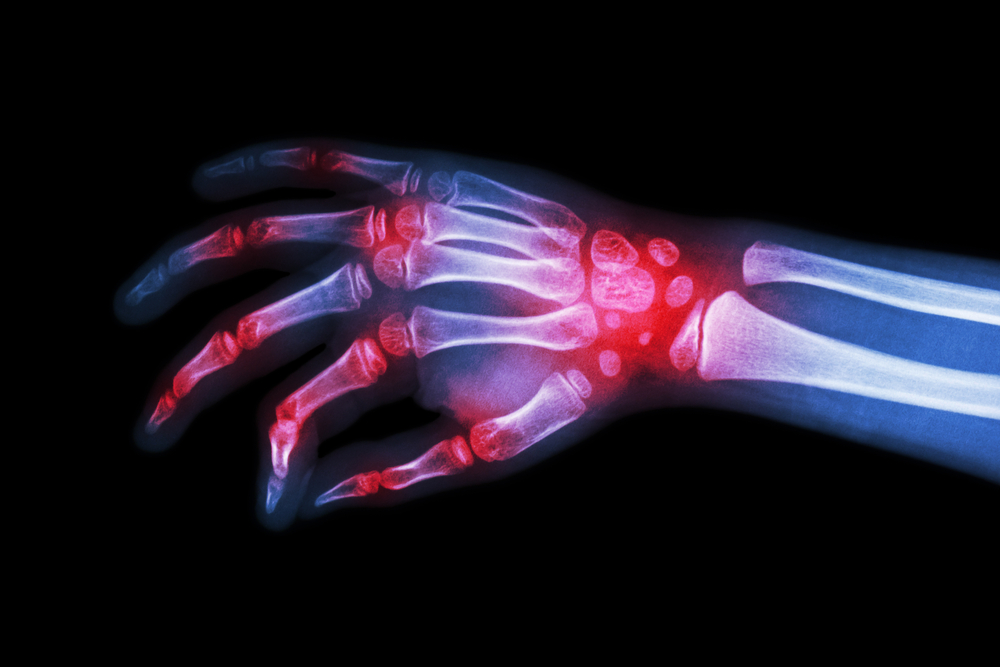
Helping people with arthritis is one of our top priorities here at Mangar Health. In fact, it’s why we were founded in the first place, with our founder inventing the original bath lift to help an elderly relative with arthritis.
After all, there’s nothing quite like a long hot soak in the bath to help relive the symptoms of arthritis which is why we’re so proud our bathing cushion can let people have a real soak in a full bath but… we’d much rather people didn’t develop arthritis in the first place.
Whilst modern medicine hasn’t yet got to the point where it can cure arthritis there are some simple steps you can take to lower your risk of developing it as you get older…
Smoking
If you’re a smoker it must feel like everyone’s out to get you these days but there are good reasons for that.
Along with all the other negative effects smoking has proven to have on your health, it’s also been shown to double your risk of developing arthritis when compared to non-smokers.
What does smoking have to do with arthritis you ask?
Scientists have found that smoking massively increases your body’s inflammation levels in joints, which is one of, if not the main, underlying cause of all types of arthritis. For more info see what the NRAS has to say
Get Plenty Of Exercise
According to Arthritis Research UK getting plenty of exercise actually has two positive effects in reducing your chances of arthritis.
Reducing your weight takes the stress of carrying that excess weight off your joints whilst at the same time strengthening the muscles around them.
Binge Watching Game Of Thrones
Ok, so it’s not just Game of Thrones which causes arthritis but rather, at least indirectly, all TV viewing.
You see, as we mentioned above, obesity is one of the leading causes of arthritis in later life and people that watch a lot of TV on a regular basis are more likely to put on extra weight. Add to that, in later life inactive joints are also more prone to arthritic complications.
To avoid this, try to limit your television viewing and be more active, even if it’s just going for a walk (unless Game of Thrones is on and then we totally understand!)
Red Meat
We all know that chicken is better for you than steak but eating white meat over red is also a good way to avoid arthritis.
The National Rheumatoid Arthritis Society found that people who regularly are a lot of red meat were doubling their chances of developing rheumatoid arthritis.
Loneliness
Staving off arthritis isn’t just about your physical health, you also need to look after your mental health.
Researchers at Oxford University found that people who were socially awkward or isolated tended to develop more severe rheumatoid arthritis when compared to those with large circles of family or friends.
Eat Those Oranges!
Eating a healthy diet is a great way of decreasing your odds of arthritis in later life, especially if you include plenty of fruits and vegetables high in vitamin C.
Researchers at Duke University in the USA found that people who weren’t getting enough vitamin C tended to have higher rates of osteoarthritis, the most common form of arthritis.
Avoid Anything Your Allergic To
This may seem like really obvious advice but it’s been backed up by research from Kings College London; when you have an allergic reaction to something, even a minor one it affects your body in numerous different ways and one of those is inflammation of your joints. Over time that can lead to an increased chance of arthritis in your joints, so the best advice is if you know you have a reaction to something, even if it’s only a mild one, try to avoid it to prevent the onset of arthritis.
Omega-3’s Are Great For Preventing Arthritis
Certain fish are rich in omega-3 fatty acids which have a lot of healthy affects on the body including reducing inflammation in the joints.
A study in the Annals of the Rheumatic Diseases showed that woman who regularly ate fish such as salmon, trout, mackerel and sardines were at lower risk of rheumatoid arthritis.
A History Of Arthritis Infographic
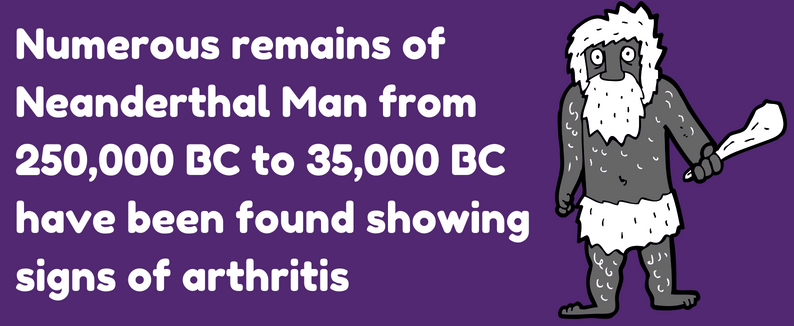
Arthritis can have a terrible impact on people of all ages, genders and walks of life and has been known to man by a variety of names since before recorded history began.
Little was known of the various diseases under the arthritis umbrella except for their symptoms and signs…

Care Home’s 1940s Transformation Helps Dementia Patients

Making the move to a new retirement home can be a nerve-wracking thing to do, especially if you’re living with dementia. All the unfamiliar surroundings, sounds and new smells can be daunting and a lot to take in.

It’s not surprising that leaving the comfort of your cosy and familiar home to move to a care home with lots of new faces and rooms can be a scary experience.
An Ohio-based retirement home thought of an in-genius way to make their residents feel more at ease in their new home by transforming it to look like a 1940s neighbourhood.
The Lantern has made the exterior of each resident’s room look like the outside of a house complete with its own miniature porch and chairs where they can sit out and speak to their ‘neighbours’ with the care home’s corridors being transformed to look like streets.
This helps residents living with dementia by triggering memories from their past, which makes them feel like they’re in a familiar environment and not scared and unsure about their new home.
Not only that, when it’s close to meal times, the care home sprays appetising scents around to remind the residents they’re hungry and gets their bodies ready to eat.
The Lantern also provides residents with lots of activities to keep them sociable, active and happy including; family nights, cooking lessons and shopping trips.
We love this idea! Do you?
Dementia Residents And Their Diet

Currently, there are 47.5 million people living with dementia worldwide and if you’re a carer then you may be used to providing care and support to a resident who is living with this condition.
Dementia occurs when there has been damage to the brain. It can take many different forms depending on which part of the brain has been affected. The brain is usually damaged by diseases such as, Alzheimer’s or a series of strokes, which can cause cell degeneration or restrict blood flow.
One of the challenges carer’s face is ensuring a resident with dementia is eating properly, especially when they may have the inability to recognize hunger or thirst, have a preference to sweet (unhealthy) tasting foods, have difficulties chewing and swallowing or have severe weight loss.

It’s not only true that we are what we eat, but how we think and behave too!
When it comes to feeding someone with dementia, it’s vital they’re having enough protein, fibre, vitamins and fluids to ensure their bodies and brains are properly nourished.
Here are some ways you can help to do this and keep your resident happy and healthy;
It’s recommended to feed dementia patients little and often with tasty and colourful foods to ensure they have enough brain fuel.
If they have difficulties swallowing or chewing, why not try mashing or even pureeing the food? Do remember, however, that it does need to look and smell appetizing to entice them to eat. Also, any difficulties should be investigated by referral to a dentist or speech and language therapist.
If you’ve never liked brussel sprouts, you’re not going to start eating them now!
It’s a good idea to base foods on what is familiar and comforting for the resident. For example, why not ask family members what their likes and dislikes are?
If possible try to feed them foods rich in Vitamin B complex which can be found in potatoes, green vegetables, milk and cheese (to name just a few) as it has been found to slow the Alzheimer process.
People living with dementia also have a decreased sensitivity to taste, so you may need to add stronger flavours to their dishes by using herbs and spices.
To help keep them hydrated throughout the day, give them a variety of different fluids, such as, soup, hot chocolate, coffee, fruit smoothies, tea, diluted cordials etc.
Don’t be offended if they refuse the food you’ve prepared
We understand it can be upsetting as a carer to have food which you’ve taken time and effort to prepare to be refused, especially when you know they need to eat it for their health and well-being.
Remember it’s not a personal insult, just wait a bit and try again.
If they continue to refuse, remember to make a record of it. To ensure you know how much they have or haven’t eaten in a day.
Our final tip!
Never ask questions that incur an easy “Yes” or “No” answer. For example, “Would you like a cup of tea?” Instead, give them two alternatives which they must pick, such as, “Would you like a cup of tea or coffee?”
Pressure Ulcers: What Are They And How Can You Prevent Them
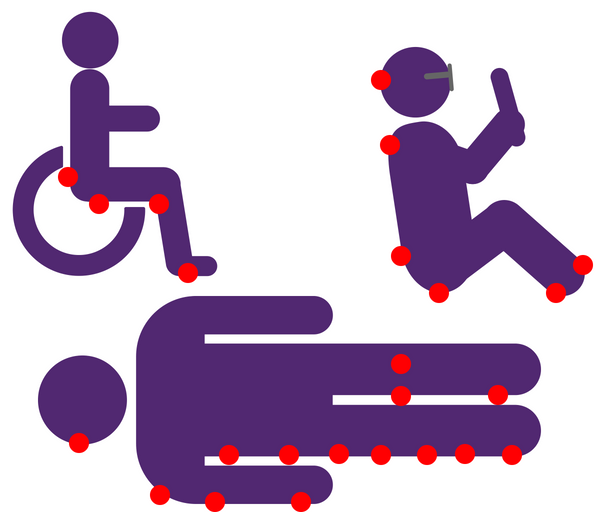
What Is A Pressure Ulcer?
Simply put, a pressure ulcer is localised damage that occurs to the skin and/or the underlying tissue caused by unrelieved pressure.
Ulcers can range from mild damage (typical you’d notice it as a red patch with breaks in the skin) to deeper damage (dark red or purple with black patches that can turn into much bigger wounds).
What Cause’s Pressure Ulcers?
There are two main causes for a pressure ulcer to develop. Either Pressure, caused by a concentration of body weight on one particular area over a period of time or something called Shearing. Shearing is caused by the skin being pulled in different/wrong/unusual directions. Actions that can cause this include (but aren’t limited to)…
- Sliding or slumping down in a chair or bed
- Sitting in a chair that’s the wrong size for you (too wide, narrow, small, high or low)
- Sliding down the bed and then pushing yourself back up
- Rubbing and or massaging certain areas
- Badly fitting clothes or shoes
Am I At Risk Of Pressure Ulcers?
Many people can be at risk of developing a pressure ulcer, especially if any of the below apply…
- Being unable to move around very well
- Sitting in or using a wheelchair for long periods of time
- Poor blood circulation
- Any kind of spinal injury that may have resulted in a loss of sensation
- Diabetes, certain neurological diseases, strokes, heart disease or lung disease
- Smoking
- Incontinence
- Excessive perspiration or sweating
- Previous injuries or wounds to areas pressure ulcers are commonly found in (see below)
- Having lots of skin folds
- Bad diet or poor fluid intake
- Being under or overweight
- Having dry or otherwise poor skin condition.
Most Likely Locations Of Pressure Ulcers

Early Signs Of A Pressure Ulcer
Early identification/diagnosis of a pressure ulcer is vital in treating and stop them from spreading. You may notice some of these as an early sign of a pressure ulcer…
- Changes in the colour of your skin (be on the look out for red patches on light skin or bluish/purplish patches on darker skin) that don’t go away
- Changes to the ‘feel’ of your skin (soreness, pain. numbness etc…)
- Increased pain on any of the common locations shown above
- Warm/hot sensations in any of the locations shown above
- Blisters/blistering on any pressure points, especially any of the ones shown above
- Swelling on/over any sore areas of skin.
How Can I Avoid A Pressure Ulcer?
- Tell your healthcare professional as soon as you notice any sore or painful patches of skin
- If possible, gently change your position as often as you can or if not ask for someone’s help to do it for you
- As we mentioned earlier, try to avoid repeated friction or shearing.
- Try to keep your heels elevated to minimise pressure damage.
- Make sure either yourself or someone else is checking your skin daily for signs of damage. (Top tip: If you’re on your own using a mirror should let you see most areas not normally visible to yourself)
- After a bath or shower don’t ruby our skin dry, gently pat it instead.
- Try to protect your skin from excessive moisture and/or dryness
- Stick to a well-balanced diet and make sure you keep yourself hydrated
- Keep the number of layers between your skin and your pressure reliving mattress/cushion to a minimum
- If you find yourself in a bed or chair for a long period try to avoid crumbs or creases in the material that could rub on your skin
- If possible, give up smoking
Who Should I Contact If I think I’ve A Pressure Ulcer?
If you’re at all worried, think you may be/have developed a pressure ulcer or may be at risk of developing one due to your circumstances and would like to take preventative measures then your first port of call should be to contact your GP or healthcare professional as soon as possible.
The quicker a pressure ulcer is identified, the easier it is to prevent or treat.
Reference: Kent Community Health NHS Foundation Trust
8 Celebrities With Cerebral Palsy

For those of you who didn’t know exactly what it is or how it affects people, Cerebral Palsy is a group of permanent movement disorders.
Signs of the illness usually appear in early childhood but signs and symptoms can vary drastically between individuals. These can include (but are not limited too), poor coordination, stiff or weak muscles and tremors; there may also be problems with peoples vision, hearing, swallowing or speaking.
Whilst symptoms do get noticeably worse after their onset, over time the underlying problems don’t tend to deteriorate.
Despite any obstacles life may have placed in their way however, it hasn’t stopped the people on our list from making a name for themselves in their chosen field…
RJ Mitte
Perhaps best known for his role as Walter ‘Flynn’ White Jnr on the hit show Breaking Bad, RJ is an American actor, producer and model. Born in 1992, he moved to Hollywood in 2006 to pursue his dreams of acting. On arrival in Hollywood he began training with talent manager Addison Witt with the goal of using his cerebral palsy to educate viewers as to the condition.

Image Credit: Gage Skidmore
Abbey Nicole Curran
Abbey Nicole Curran was Miss Iowa back in 2008 and was the first contestant with a disability to ever compete in the Miss USA pageant. Since then she’s gone on to found a non profit charity called The Miss You Can Do It Pageant for other young girls and women with special needs.
Maysoon Zayid
Maysoon Zayid is an American actress and comedian. She’s known as America’s most famous female Muslin comedian and the first ever to perform stand up in both Jordan and Palestine.
She started her career acting in shows like As the World Turns and Law & Order before turning to stand up. In 2003 she co-founded the New York Arab-American Comedy festival.
Josh Blue
Josh Blue is an American stand up comic who shot to fame after being the ‘last comic standing’ during NBC’s fourth season of their hit reality show Last Comic Standing. A lot of his routine for the show, and since, has focused on a self-deprecating style of humour that revolves around his Cerebral Palsy
Bonner Paddock
Bonner Paddock is the world’s first Ironman with Cerebral Palsy. Widely considered on of, if not the, hardest one day sporting events in the World; the Ironman triathlon consists of a 2.4 mile swim, a 112 mile bike ride followed by a marathon… in that order… without a break.
Bonner Paddock completed all that back in 2012, all under the hot heat of a Hawaiian day!
Dan Keplinger
Dan Keplinger is an artist, motivational speaker and star of the documentary King Gimp which is about his experience with Cerebral Palsy.
Transferring from a special needs school at the age of 16 he graduated with a major in mass communication and has gone on to create documentaries about his life, create beautiful artwork and works as a motivational speaker, visiting schools and other organisations to discuss Cerebral Palsy with them.
Geri Jewell
Geri Jewell is a famous American TV actress famous for her role as Geri Tyler in the show Facts of Life from 1980 to 1984. This ground breaking role made her the first person with a visible disability to have a regular role on a prime time series. It also made her the first actor with Cerebral Palsy to ever be featured in a TV series.
She’s since gone on to star in many other TV shows including the immensely popular western Deadwood
Christy Brown
The final and arguably one of the most famous people on our list, Christy Brown was an Irish writer and painter with Cerebral Palsy who was only able to write, type or draw with the toes of his one foot.
His life was immortalised in the Academy Award winning biopic My Left Foot, with Daniel Day-Lewis playing the part of Christy Brown.
Norwegian Paralympic Team travelling to South Korea get a lift from the Mangar Camel and ELK
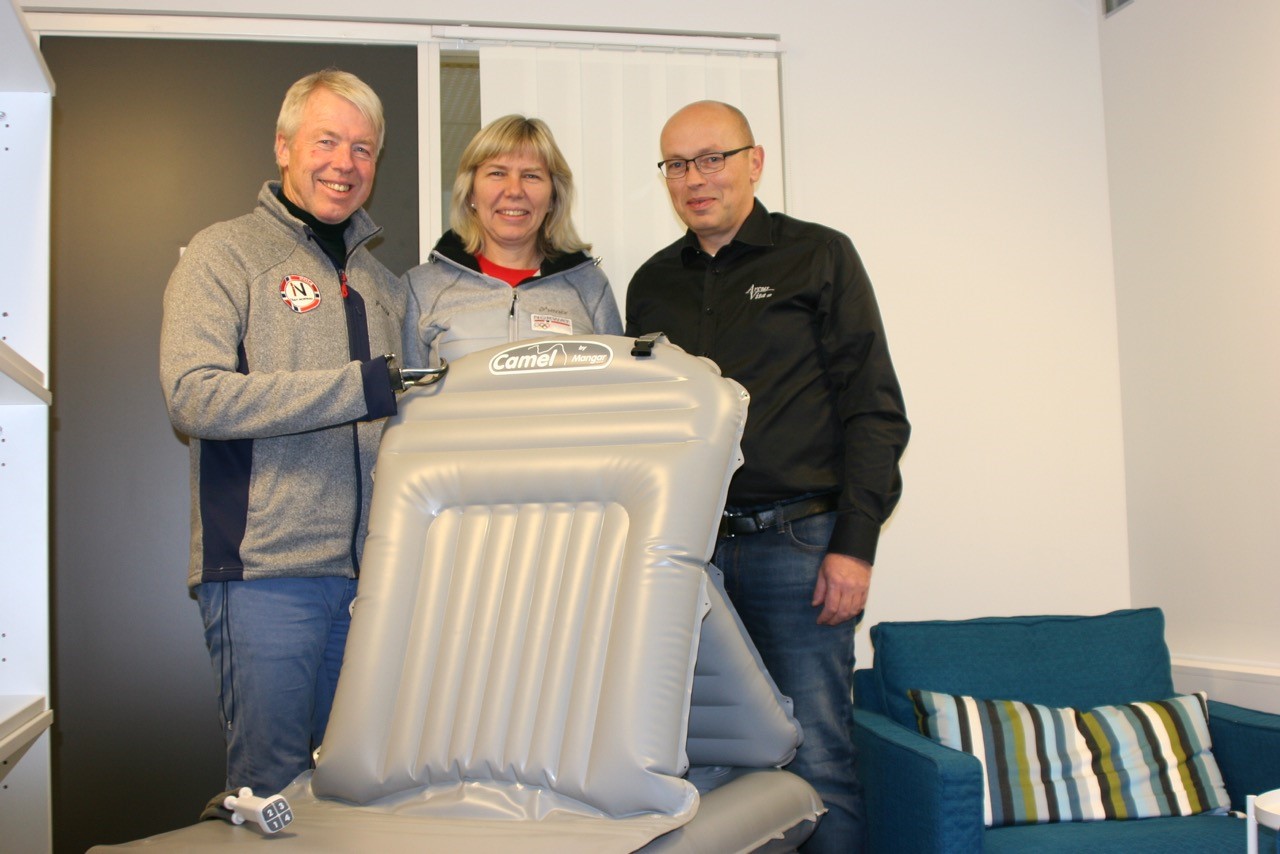
Mangar Health’s Camel and ELK lifting cushions will be travelling to the winter Paralympics in Pyong Chang , South Korea this March, to support the Norwegian team.
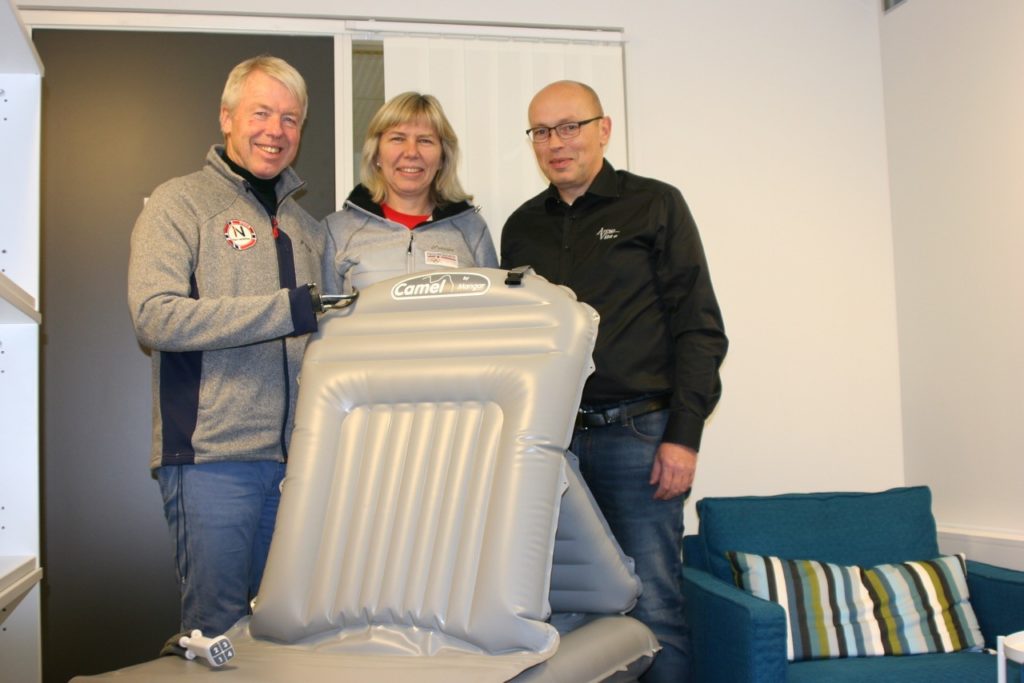
L-R: Cato Zahl Pedersen, Hilde Mosby Berge and Tor Arild Mortveit
Mangar Health’s Camel and ELK lifting cushions will be travelling to the winter Paralympics in Pyong Chang , South Korea this March, to support the Norwegian team.
Tor Arild Mortveit from Arcus Vita, Mangar Health’s distributor in Norway, presented the lifting cushions to team ambassador Cato Zahl Pedersen and Chief Medical Officer, Hilde Mosby Berge.
Cato is a familiar face in Norway having won fourteen medals at the Games, in both Winter and Summer Paralympics. Famous for alpine skiing and athletics, Pedersen also took part in a successful four-person Norwegian skiing expedition to the South Pole.
Tor says, “Arcus Vita is delighted to be supporting the Norwegian Paralympic team in Pyong Chang this winter. The Camel and ELK are great lifting solutions for the medical staff supporting the team and they are thrilled to have the equipment as part of their kit.
“During the long day of a tournament the competitors will need to get out of the wheelchair and lay down on a bench to rest. In Pyong Chang they know that the benches are very low and the ELK will be used for transfers between chair and bench. These guys are very muscular and heavy to lift so being able to use the Mangar ELK to do this job for us is the perfect answer to an ongoing challenge.”
Chief Medical Officer, Hilde Mosby Berge, uses the Camel with athletes at both the winter and summer Paralympics. Tor says, “Hilde is extremely experienced at managing the care of Paralympians and understands the high risk of injury in a number of the sports featured at the Games. The Camel is her equipment of choice to lift any injured competitors after a fall.
“In addition, some Paralympians find travelling long distances between international events challenging and the portability of the Camel makes it the ideal lifting device.”
Simon Claridge, CEO at Mangar Health commented, “We’re very proud to be associated with such a prestigious event as the Paralympics. The Mangar Health emergency lifting cushions are used by healthcare professionals world-wide to protect them from injuries caused by repetitive lifting. We wish the Norwegian competitors luck at the Games and hope the medical support team enjoy their time in Pyong Chang.”
The 2018 Paralympics start in South Korea on the 8th March and conclude on the 18th March.
For more information contact:
Clare Birt
5 Famous Celebrities You Didn’t Know Started Their Careers As Paramedics

Have you ever thought about what celebrities used to do before they became famous?
You usually hear about the ‘rags to riches’ story but it got us thinking about whether any of them used to work for our Emergency Services?
Of course, we got investigating and with some surprising results!
Here are 5 famous celebrities you didn’t know started their careers as paramedics:
Steve Buscemi
You will have seen Steve appear in films, such as, Reservoir Dogs, Pulp Fiction and Armageddon amongst many others. Steve also narrated characters in films such as, Transformers: The Last Knight, Hotel Transylvania and is the voice of Randall from Monsters Inc.
Did you know?
Steve Buscemi started his working life as a firefighter joining the FDNY’s Engine Co.55 in Manhattan’s Little Italy section in 1980 and served with them for four years.
When questioned about why he decided to become a firefighter by a Salon interviewer, he responded;
‘My dad had encouraged me to take the civil service test when I was 18. So I did, and I kind of forgot about it until my name came up on the list four years later. By then I was living in Manhattan, working as a furniture mover during the day, doing stand-up comedy at night and looking for a change. I liked the job – the guys I worked with the nature of the work. I think I would have been happy doing it if I hadn’t had a greater passion for acting.’
Buscemi returned to Engine Company No. 55 straight after the 9/11 terrorist attacks, where he worked with for week doing 12-hour shifts to help sift through the rubble looking for survivors.
David Lee Roth
Famous American rock vocalist, musician, songwriter and lead singer of hard rock band Van Halen. David has also made appearances in films such as Despicable Me, Fast and Furious 7 and Super Bad.
Did you know?
Legendary Van Halen frontman has traded in his rock ‘n’ roll lifestyle to become a NYC Paramedic.
“I’m a state-licensed EMT in New York. I probably have over 200 911 calls on my ticket in the last six years alone. I live a very different life away from music.”
“You would never know you were dealing with a rock’n’roll guy,” said Linda Reissman, Roth’s EMS consultant and tutor. “His commitment really is touching. He wants to help people.”
Erron Kinney
Tennesse Titan, Erron Kinney, was an NFL player for seven seasons during the early 2000s. He caught his last pass on Christmas Eve in 2005, a 6-yarder from Billy Volek in the third quarter of a 24-10 loss to the Dolphins.
Did you know?
Since retiring from NFL, Erron is now a Fire Chief in Sherborn, Massachusetts.
Jack McGee
Famous American television and film actor, known for his roles in The Fighter, Legally Blonde, Coyote Ugly and Lethal Weapon 3.
Did you know?
Jack McGee was a New York City firefighter for over 10 years before quitting his job in 1987 to pursue his dream of becoming an actor.
Robert John Burke
Robert John Burke is an American Actor who is known for his roles in Gossip Girl, Law & Order, RoboCop 3 and Academy Award-Nominated film Munich.
Did you know?
Robert is currently a volunteer firefighter in Long Island, New York.
New Mangar Health Employee Buys The Perfect Gift For A Loved One
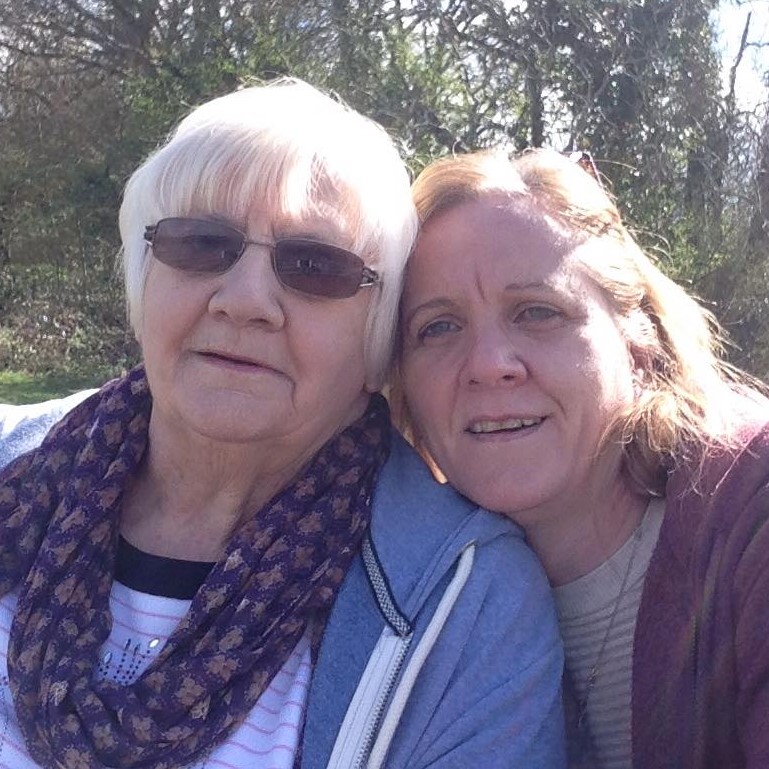
Sharron Price joined the telesales sales team in November 2017 and it didn’t take her long before she purchased a Mangar Health product for a special someone … in fact, just one week.

Pictured: Linda Price and Sharron Price, Telesales Executive from Mangar Health
During Sharron’s training she was introduced to one of our bathing aids, the Mangar Bathing Cushion. Through the training, Sharron soon learned all the features and benefits of the cushion, including the fact it’s lightweight, portable and no expensive installation costs are needed.
It wasn’t long until Sharron realised it was a great product, but more importantly, would be perfect for her own mum, Linda.
“I thought the bathing cushion was a fantastic idea!”
Sharron Price, Telesales Executive at Mangar Health
Linda Price, aged 77 years old, has lived with arthritis for several years and had knee replacement surgery five years ago because of it. Sharron explains the difficulties her mum used to have;
“I knew my mum had been struggling to get in and out of the bath and was having more showers than baths because of it.
“To be able to get out of the bath she was literally twisting her body onto her knees, and then twisting her arm around her back to try and grab hold of something to try and lever herself up. This was very painful, as well as, inconvenient for her.”
After Sharron’s first week at Mangar Health, Sharron was due to visit her mum at the weekend. She soon found herself showing her mum the Mangar Health website and looking at the bathing cushion videos together, to which her mum explained how she’d ‘love one of them’.
The following Monday, Sharron came into work and purchased a Mangar Bathing Cushion for her mum as the ‘perfect’ Christmas present.
“I couldn’t think of anything better than to give my mum a gift that would actually change
her life for the better.”
Sharron explains the special moment when she gave her mum the present on Christmas Day;
“When I gave my mum her present, as soon as she’d opened it, her face lit up! Even though she was at my house for Christmas, the first thing she did was get into my bath.”
“I remembered from my training that it was important to do a dry run first, just in case it wasn’t right and we needed to return it. But it was perfect!”
“I then left her to it and shut the door, she got in herself and was soon
singing a way in the bath – bless her.”
“I also got her some Himalayan bath salts as they’re good for arthritis
and she absolutely loved it.”
“She’s taken it home now and has been calling me saying ‘Oh I love my bathing cushion.
I’ve been showing my friends.”
The bathing cushion has also given Sharron her own peace of mind;
She continues, “My mum lives alone and a good couple of hours away from me. She used to only have a bath if either my sister or I was there in case she got stuck.
Thankfully, I can now relax in the knowledge that the bathing cushion will only lower my mum into the bath, if it’s got enough battery charge to lift her back out again.
In that sense, it has been a wonder for us both.”
Before joining Mangar Health and other previous sales jobs, Sharron had worked as a carer for several years and has experience in care homes, home care and hospitals, where she cared for both the elderly and young.
Sharron talks about her previous experience as a carer; “I loved the work. I absolutely loved the work because I’m a caring person. I can’t see anyone struggle.
So I like to know that I’m doing a good job. So I found the job very rewarding.”
Unfortunately, due to unforeseen circumstances, Sharon could no longer work as a carer and went into sales where she’s had over 10 years of experience.
“It was great when I realised Mangar Health was looking for a new telesales executive. It’s like the perfect job for me because it combines both my sales and carer experience.”
“It also feels just as rewarding because I can see the Mangar products are a need rather than a want. These products make a huge difference in people’s lives,
from the caregiver to the individual.”
“I can wholeheartedly say if I was still working as a carer, I would definitely use Mangar Health products to help the residents in my care and also to help protect my back. They’re a lot more dignified and personal for the resident to use.”
If you’d like to request a free demonstration of the bathing cushion please click here or for more information regarding any of our products please click here.
6 Techniques For Dealing With Intense Musculoskeletal Disorder Pain
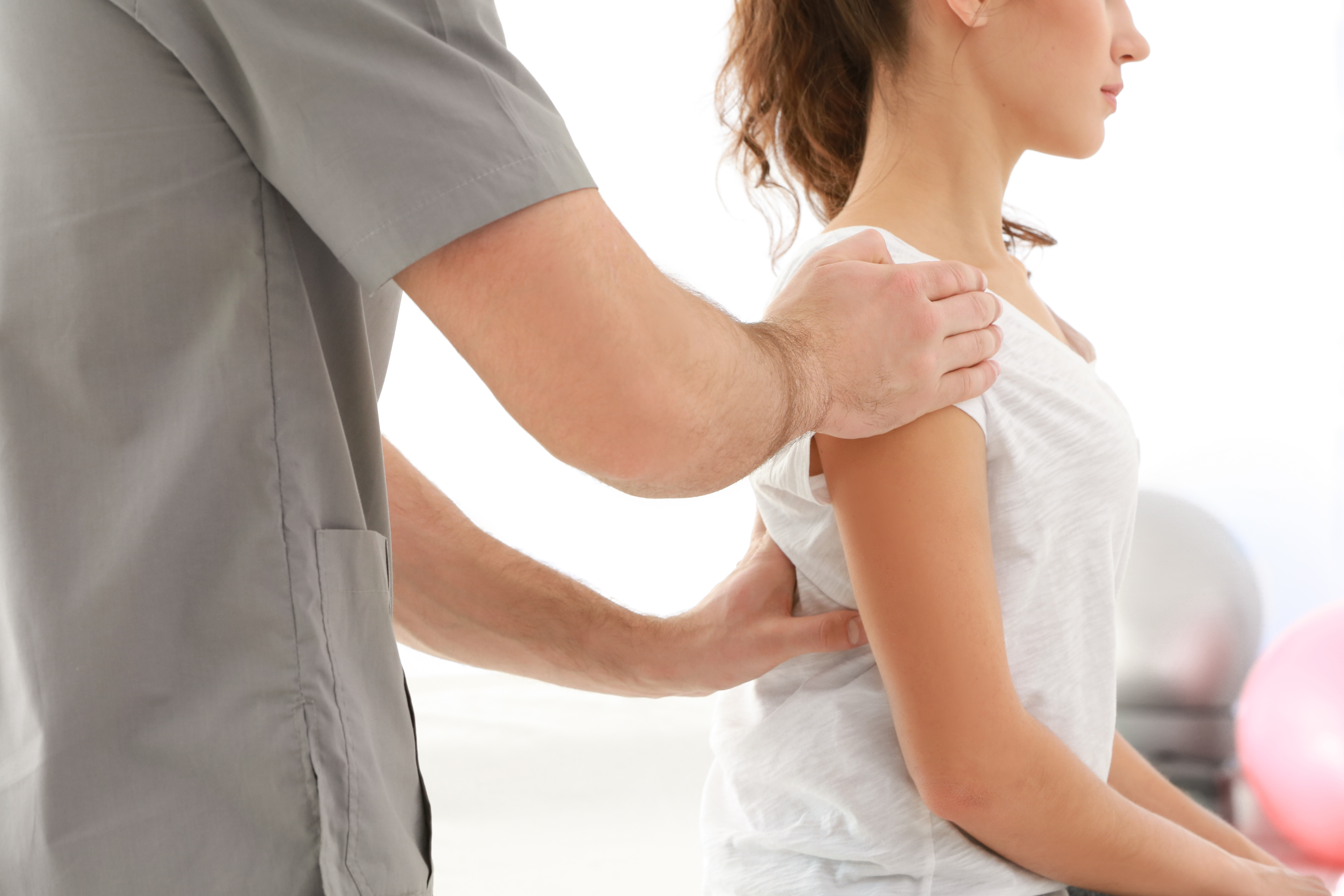
If you’re living with a Musculoskeletal Disorder then you know it can be painful and debilitating. Damage occurs to the musculoskeletal over continual and gradual wear and tear to your body, such as damage to your muscles, bones or joints etc. This usually results in lower limb disorders, back pain and injuries and neck and upper limb disorders.
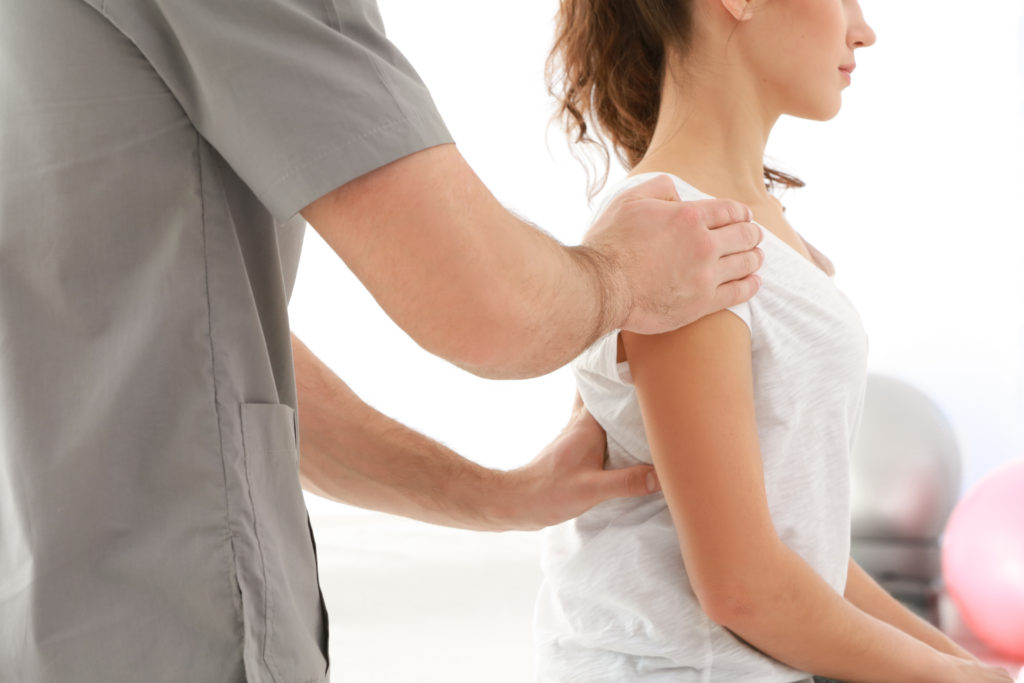
This causes widespread or localised pain, which can cause constant aches and pains, swelling, stiffness in the entire body and extreme fatigue because of disturbed sleep.
We understand this can make everyday life difficult to manage and therefore we’ve put together 6 techniques on how to reduce pain without the need for pain relief medication…
Hydrotherapy
It’s probably the oldest form of pain relief, but you still can’t beat a hot, relaxing bubbly bath to relieve all your aches and pains.
“I am sure there are things that can’t be cured by a good bath but I can’t think of one.”
-Sylvia Path, The Bell Jar
Being in a bath is like being able to put a heat pack on every part of your body that is in pain. A hot bath increases the temperature of your aching muscles, therefore blocking pain sensors and producing effective pain relief.
If you’re having difficulties getting in and out of the bath because of stiffness and pain, take a look at our Bathing Cushion here.
It’s also known that a hot bath before going to bed will help you get a better night’s sleep which is linked to lots of health benefits including giving your immune system strength to cope with pain recovery.
Acupuncture
Now, this may not sound like the most pleasant technique to help reduce pain, however, it’s proven to help significantly.
Acupuncture is a treatment which derives from ancient Chinese medicine and involves fine needles being inserted into different parts of the body for therapeutic or preventative purposes.
It involves stimulating sensory nerves under the skin and in the muscles of the body. This results in the body producing natural substances, such as pain-relieving endorphins.
It’s used in many NHS general practices, as well as the majority of pain clinics and hospices in the UK and is now a common treatment for some chronic pain.
Massage Therapy
There’s nothing better than a relaxing massage to help ease the pain. During a massage, your soft tissue gets moved around which sends electrical and chemical signals throughout your body. This reduces pain, boost your blood’s circulation, revs up your defense systems against germs and cuts down feelings of stress.
“Most people go to massage therapists to reduce pain. There’s a release of serotonin, which is the body’s natural production of anti-pain chemicals. Additionally, an aggravating factor in pain syndromes can be a lack of deep, restorative sleep. Massage is very effective at increasing deep sleep. With more deep sleep, you have less pain.”
-Tiffany Field, Ph.D. Director of the Touch Research Institute at the University of Miami School of Medicine in Miami, Florida.
Yoga
Researchers from Duke University Medical Centre reviewed 20 years worth of studies and found yoga is an effective treatment for chronic pain, including osteoarthritis and carpal tunnel syndrome.
The studies revealed that patients saw a significant reduction in joint pain, muscle stiffness, and overall physical discomfort while greatly improving their flexibility and muscle strength.
The fluid movements performed in Yoga allow swollen or otherwise painful joints to glide smoothly over one another which increases your mobility and strength without further wear and tear on your body.
Try yoga poses such as:
The Cobra
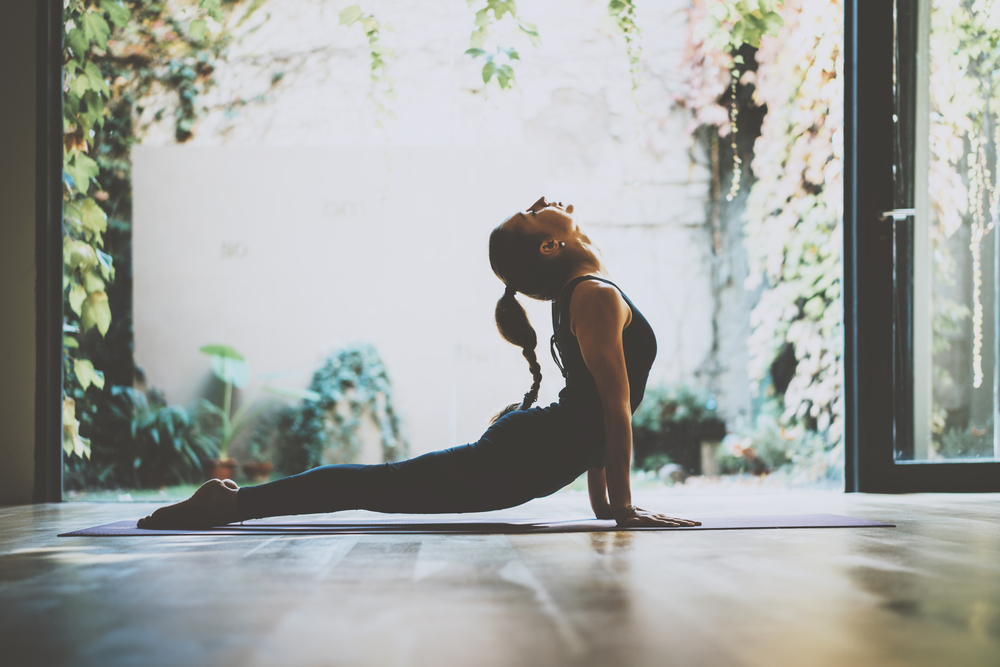
This yoga pose is good for back pain.
The Butterfly
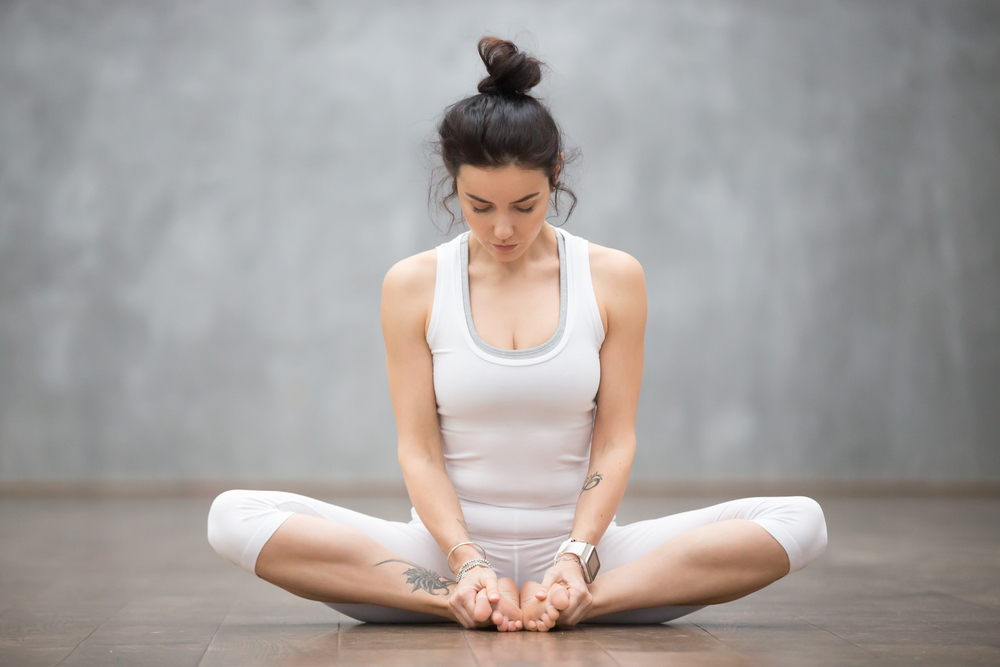
This yoga pose is good for hip pain.
The Supported Warrior
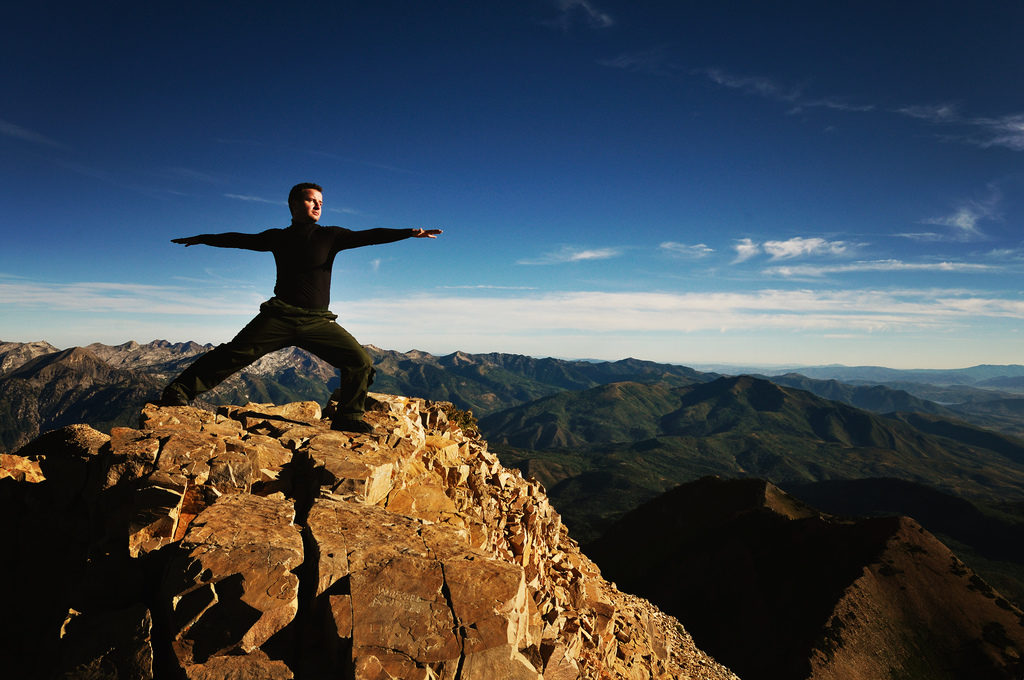
This yoga pose is good for knee pain.
Chiropractic Manipulation
Chiropractic Manipulation is when a trained chiropractor aligns your body’s musculoskeletal structure, focusing mainly on the spine to put your body back into a position where it can heal itself without the need for surgery or medication.
Spinal Manipulation isn’t as painful as it sounds and has been known to relieve lower back pain as well as some prescription drugs. By manipulating your spine or other muscles, a chiropractor can reduce the pain and soreness which you feel.
Hypnosis
When you think of the word, ‘Hypnosis’ usually the image of a person staring deeply into a swinging pocket watch springs to mind. Hypnosis, however, is seen as a practical solution to delving into the subconscious mind and solving problems, such as living in chronic pain.
Hypnosis can be used to help reduce your perception of pain. If you’re living with chronic pain due to MSK or other debilitating and painful disorders than a trained hypnotherapist can help you to reduce this pain in one of two ways.
One way is to put you under hypnosis and give a post-hypnotic suggestion which will make your subconscious belief that the pain isn’t that bad, therefore reducing the pain that you feel.
Another way is to be taught self-hypnosis as it’s a form of relaxation training. Relaxing by concentrating on making sure you’re taking slow and deep breathes help to release tension from your muscles and relieve pain.
We know it’s easy for us to tell you to ‘Just to relax’, however, we do understand that learning to relax does take practice. Relaxation tapes are available to help you learn these skills, or you can be taught by a professional hypnotherapist.
Outdated Manual Handling Practices Cause A Rise In Injuries To Healthcare Workers
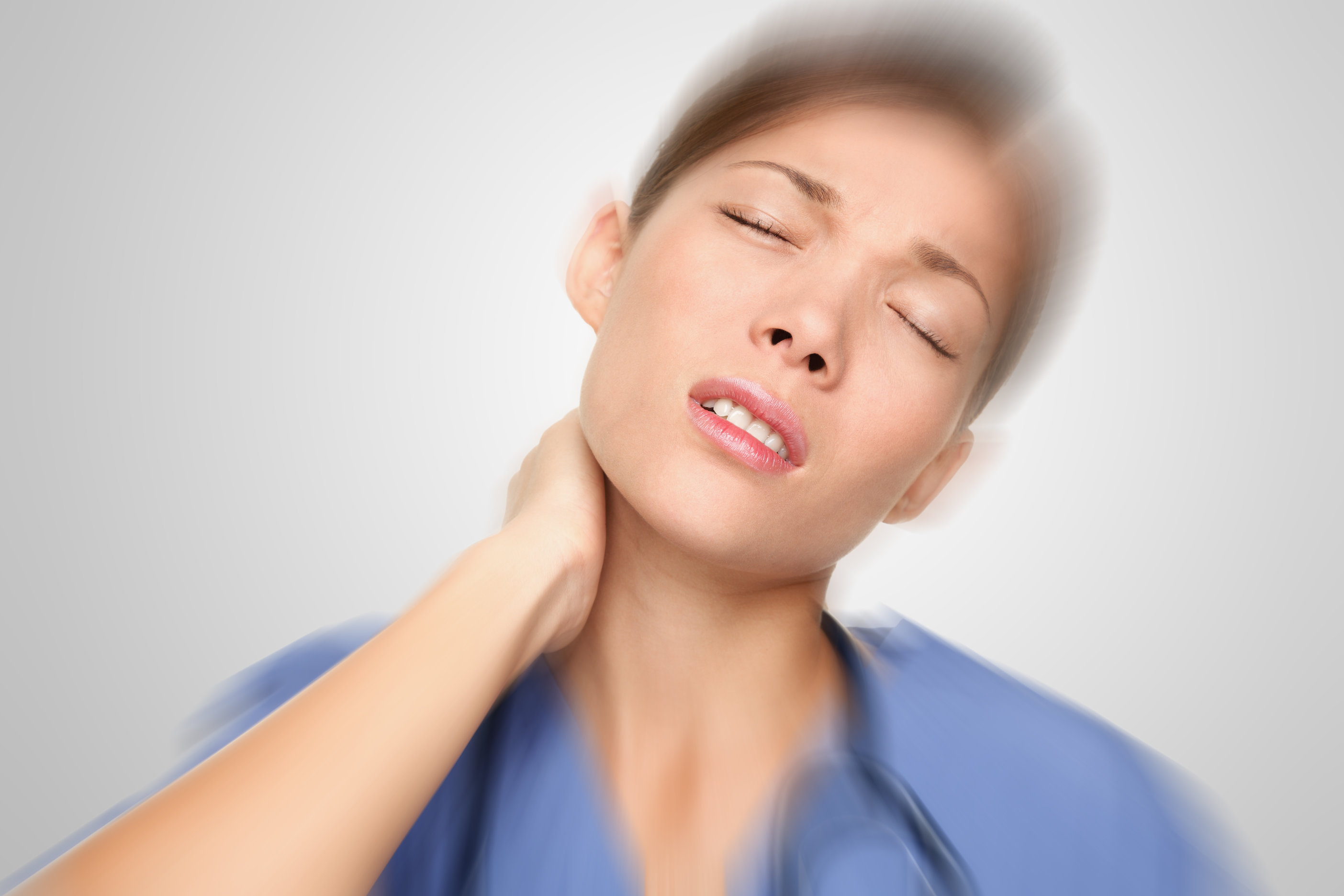
Working in healthcare can be a demanding job, not only emotionally but also physically. Caregivers are frequently using their own strength to provide manual assistance, whether that’s lifting, moving or repositioning a resident, which puts repeated strain and pressure on their bodies.
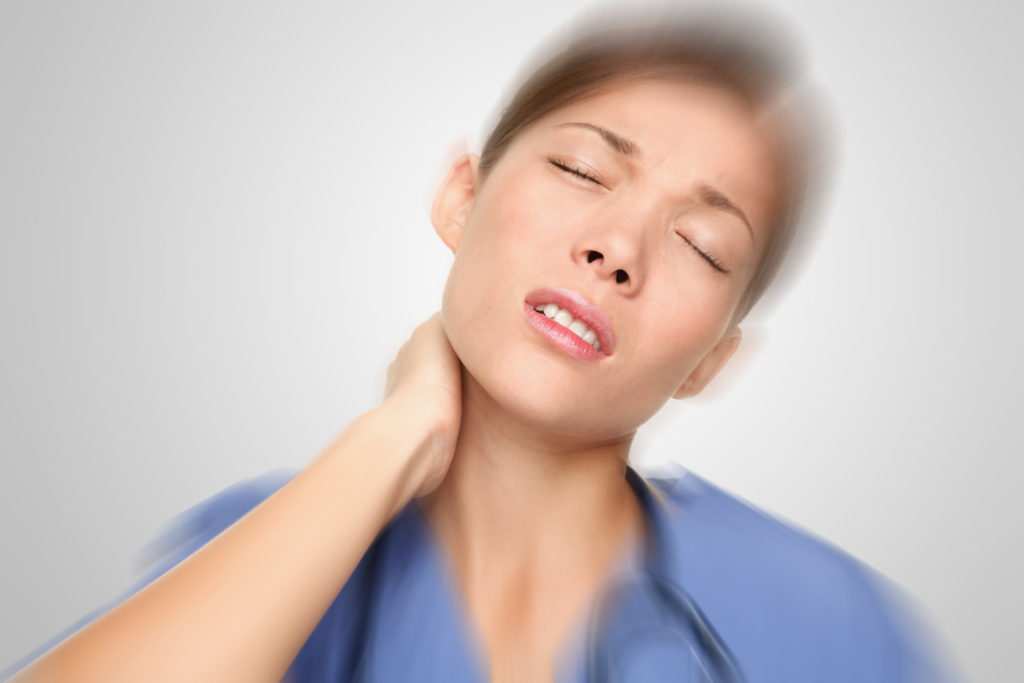
The greatest risk which healthcare workers face through manual handling are musculoskeletal injuries, which includes; disc degeneration or prolapse, lower back pain, pulled or torn ligaments, strained muscles, nerve damage and herniated discs.
“MSK most common occupational disease in Europe”
–European Agency for Safety and Health At Work
Manual handling injuries are becoming even more common due to the outdated manual handling technique of physically moving a resident with equipment such as the ‘Moving and Handling Belt’ or also known as the ‘Transfer Belt’. This technique combined with the increasing number of bariatric patients and residents leaves a rising number of healthcare workers being injured, taking time off sick and needing to retire early.
The recent figures from the European Survey on working conditions (ESWC) showed that 24.7% of European workers complain of a backache, 22.8% of muscular pains, 45.5% report working in painful or tiring positions while 35% are required to handle heavy loads in their work.
With this in mind, it’s important to be active in trying to retain the health and well-being of our current care home staff and create a safer environment for them to work in by reducing MSDs and work-related ill-health by protecting them from manual handling injuries.
By updating manual handling practices we can help prevent long-term physical and physiological damage. Using appropriate lifting equipment has been shown to be a practical and beneficial solution.
The Mangar Camel and Mangar ELK emergency lifting cushions can lift between 50 – 70 stone and are lightweight, portable, simple to use and take away the need to manually lift a resident and therefore protects the caregiver.
If you’re interested in finding out further information regarding the Mangar Camel or ELK or would like to request a free product please click here.
The Devastating Effects Of Long Term Manual Handling Injuries
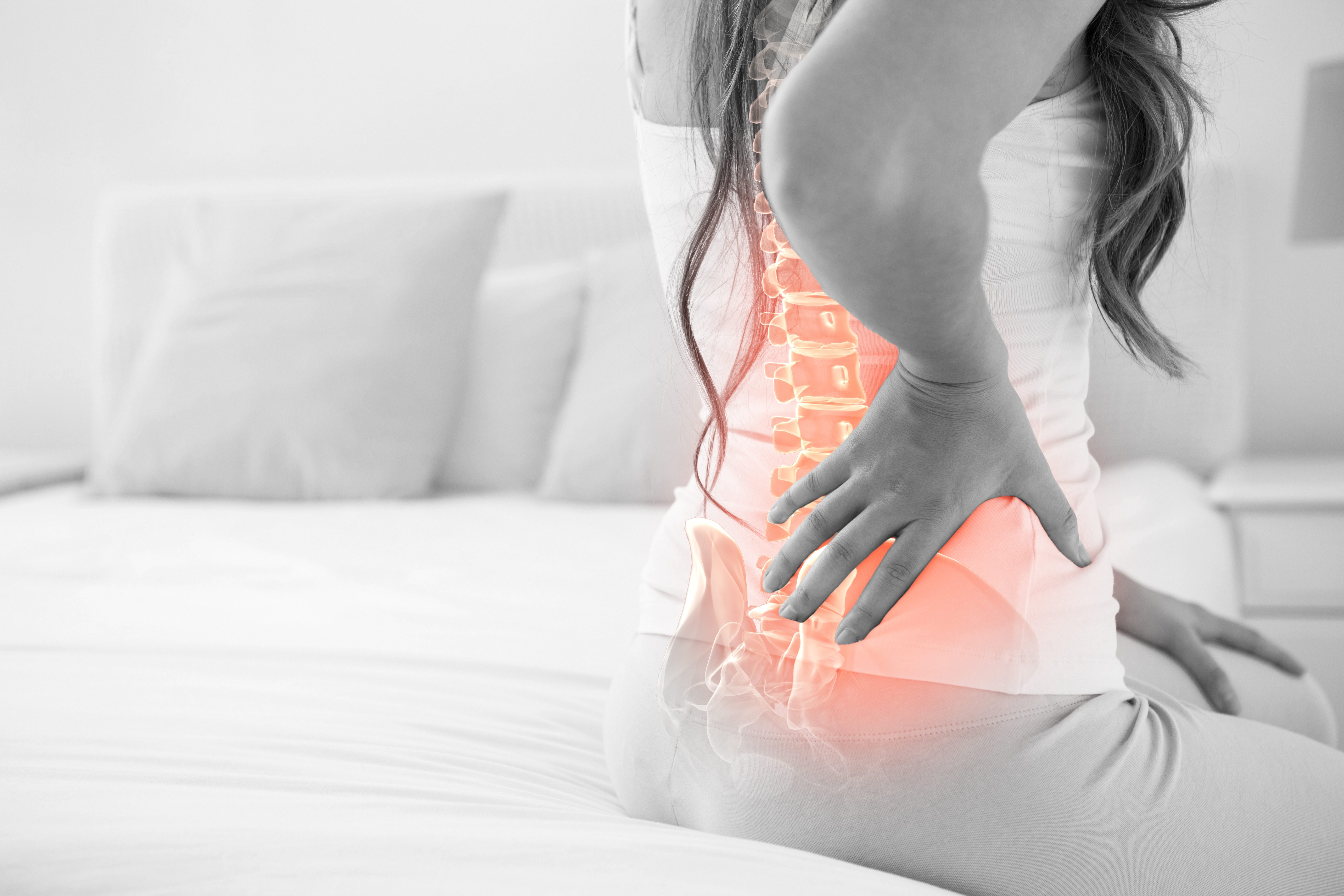
We all know someone that does or has suffered from a manual handling injury or has maybe even had to take an early retirement because of one which is why it’s so important these injuries are discussed.
Manual handling injuries usually occur when a paramedic needs to lift someone off the ground. This is usually done manually causing considerable strain and damage to the emergency worker’s musculoskeletal system.
There’s not only the severe physical consequences to be considered but also the physiological ones. A high number of emergency workers have to cope with the debilitating long-term effects associated with manual handling, which covers everything from cuts and bruises to musculoskeletal disorders. The consequences of repetitive lifting are numerous, from both a health and financial perspective.
We want to discuss the manual handling injuries that have the most serious long-term effects as we think it’s important to raise awareness on the impact they have on emergency workers’ and their everyday lives.
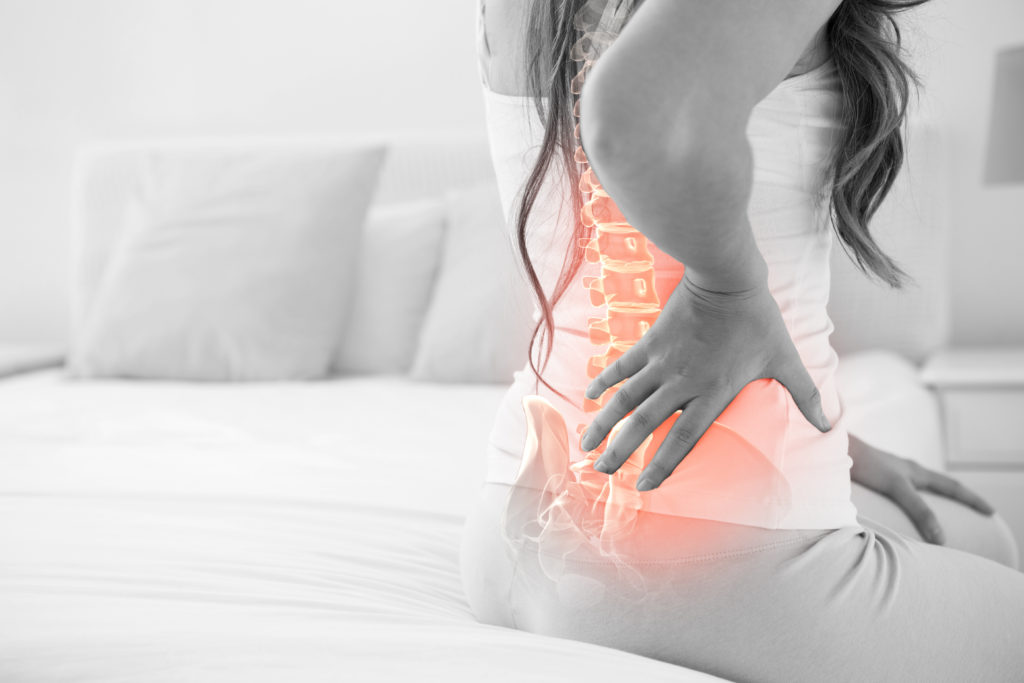
Musculoskeletal Disorders
The musculoskeletal system of the body includes muscles, ligaments, bones, joints, nerves, blood vessels, and tendons. When damage occurs to any of these parts due to gradual and repeated wear and tear, a musculoskeletal disorder can occur.
They’re usually divided into three main areas:
- Lower limb disorders
- Back pain and back injuries
- Neck and upper limb disorders
All of the above can be very debilitating and unfortunately, once a certain amount of damage has been done, can’t be fully repaired, leading to serious long-term effects for the person involved. They can cause widespread or localised pain, limit the person’s ability to move, cause constant aches and pains, swelling, stiffness in the entire body and extreme fatigue because of disturbed sleep.
The symptoms are very difficult to manage in everyday life and can limit or sometimes even stop a person from being able to work and continue normal activities. In fact, Health and Safety Executive (HSE) recorded that the total number of recorded work-related musculoskeletal disorders (WRMSDs) in 2015/2016 was an estimated 539,000 of which 176,000 were new cases. This also reveals how long-term the MSDs are as 176,000 are new cases, meaning around 363,000 are existing cases that have not yet recovered.
Mental Health Issues
When discussing manual handling injuries, the main topic of conversation is the physical effects they have on a person’s body. It’s important to remember, however, that these physical effects cause a knock on effect which causes physiological problems as well.
Long-term pain, fatigue, and stress can lead to anxiety and depression. Recent research published in the Journal of Occupational Rehabilitation has shown that many people who suffer from musculoskeletal disorders end up needing treatment for depression.
The researchers interviewed workers with musculoskeletal disorders at one, six and twelve month periods post-injury and found that almost 30% were receiving treatment for depression after twelve months.
Symptoms of depression can include, a continuous low mood, lack of physical and mental strength, disturbed sleep, changes in appetite and low self-esteem.
How to prevent manual handling injuries
It’s important to put correct manual handling practices in place to prevent long-term physical and physiological damage. By using the correct equipment you are able to provide a practical solution to preventing certain manual handling injuries from happening to emergency service workers.
The Mangar Camel and Mangar ELK emergency lifting cushions can help solve the problem of paramedics getting hurt whilst manually lifting someone off the floor. They can lift between 50-70 stone and are lightweight, portable, simple to use and take away the need to manually lift someone off the ground.
If you’re interested in finding out further information regarding the Mangar Camel or ELK or would like to request a free product please click here.


